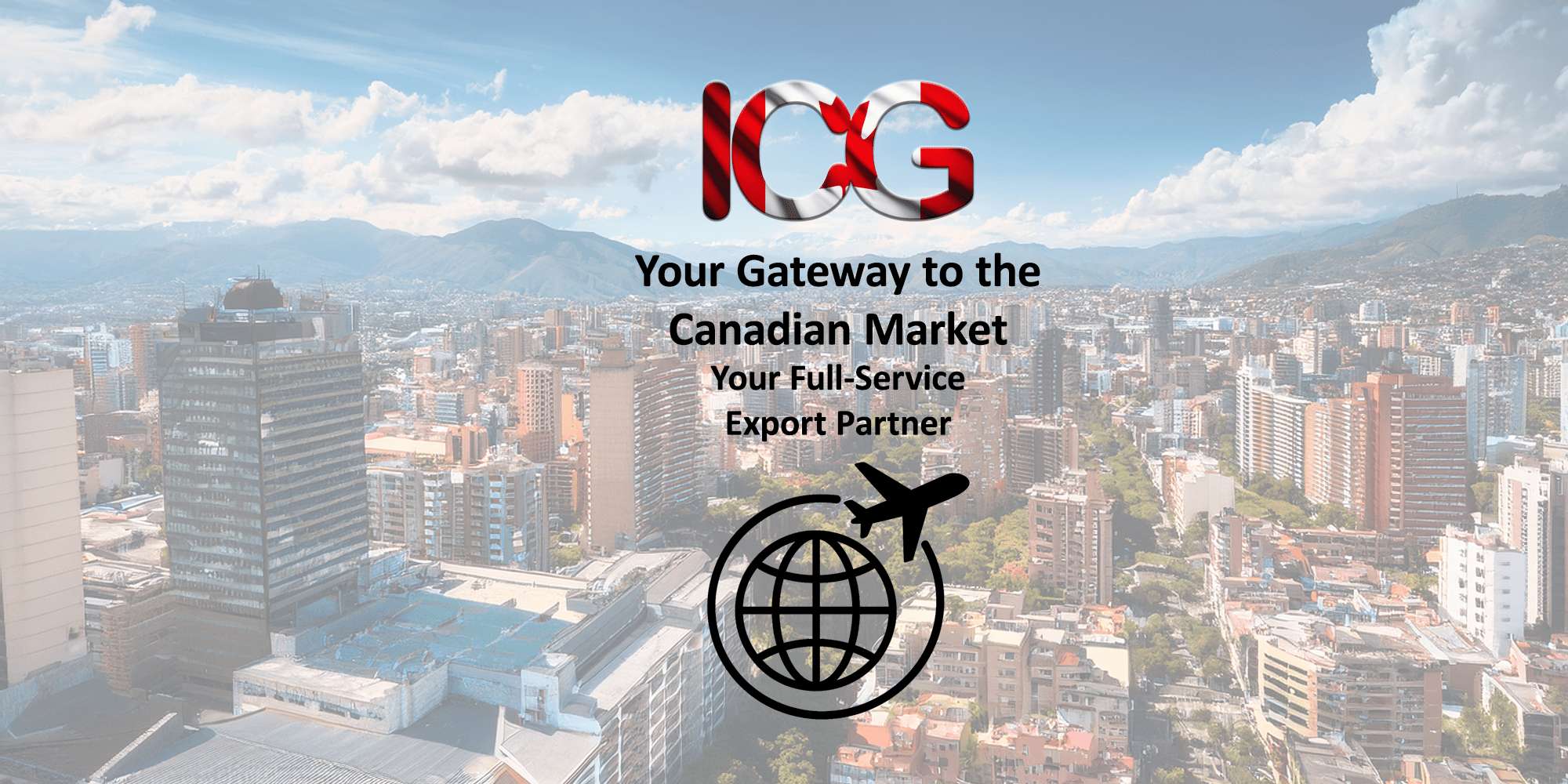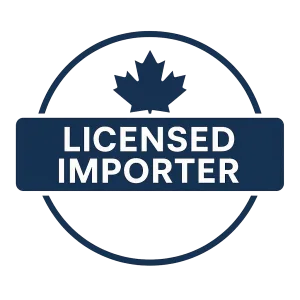
Skincare Export: Canada’s Growing Market
Trust a Licensed Canadian Importer

Introduction
Canada’s skincare export market is booming—and it’s not just maple syrup and moose anymore. With a growing demand for clean, sustainable, and ethically sourced beauty products, Canadian consumers are becoming increasingly savvy about what they put on their skin. This shift creates a golden opportunity for skincare brands across Latin America (LATAM) looking to expand into new, lucrative markets. But skincare export isn’t as simple as slapping on a “Made in Brazil” label and calling it a day.
From navigating Health Canada’s cosmetic regulations to mastering bilingual labelling and developing a scalable logistics model, entering the Canadian market requires planning, precision, and the right partners. That’s where Integrative Consulting Group comes in. If you’re a LATAM skincare company dreaming of maple-leaf-approved success, this guide unpacks exactly how you can tap into Canada’s growing skincare demand—and thrive.
Key Takeaways
- Skincare export to Canada is booming due to increased consumer demand for natural, ethical products.
- Skincare regulations in Canada require strict adherence to Health Canada’s Cosmetic Notification Form and labelling laws.
- LATAM skincare brands have a unique edge with natural ingredients, but must overcome regulatory and logistical challenges.
- Import skincare to Canada efficiently by working with licensed importers like Integrative Consulting Group.
- Canadian consumer preferences favor sustainable packaging, clean ingredients, and cruelty-free claims.
Why Canada Is a Prime Market for Skincare
Canada is no longer just following beauty trends—it’s helping set them. The skincare market here has seen steady growth, thanks to rising wellness awareness, growing multicultural demographics, and a deepening appreciation for quality over quantity. Canadian consumers want more than just creams and cleansers; they’re looking for products that reflect their values—natural, cruelty-free, sustainable, and transparent.
LATAM brands have a clear opportunity here. With the region’s rich biodiversity and heritage in botanical skincare, Canadian consumers are naturally curious. However, breaking into the market means understanding what drives Canadian beauty purchases and how to stand out without breaking the rules.
Rising Consumer Demand for Natural & Ethical Beauty
In Canada, the shift towards conscious consumerism is crystal clear—especially in skincare. The average shopper now checks ingredient lists like nutrition labels and prefers products that align with their values. Clean beauty, vegan formulations, and ethically sourced botanicals are in high demand.
LATAM brands already have an edge here. Countries like Colombia, Brazil, and Peru are home to powerful natural ingredients—think maracuja oil, cacao extract, and papaya enzymes. These native super-ingredients not only offer great skincare benefits but also bring a compelling story, something Canadian consumers eat up (well, not literally).
Skincare Market Growth & Trends in Canada
Canada’s skincare market is expected to surpass CAD $2.5 billion by 2026. Facial care and anti-aging products lead the charge, driven by rising self-care habits and social media influence. Trends to watch include:
- Hybrid skincare: Products that blur the lines between skincare and cosmetics.
- Dermatologist-formulated lines: Trust and transparency drive purchases.
- Inclusive beauty: Products catering to diverse skin types and tones.
Canadian Consumer Preferences: What Sells?
- Clean ingredients (no parabens, sulfates, phthalates)
- Fragrance-free or naturally scented options
- Cruelty-free and vegan certifications
- Minimal, recyclable packaging
- French-English bilingual labels (a must-have)
Navigating Regulatory Requirements for Skincare Exports
Canada’s cosmetic regulations are governed by Health Canada. From product safety to labelling and notifications, compliance is essential. Skipping these steps can result in delays or outright refusal at the border.
Health Canada and the Cosmetic Notification Form
Before your product can be sold or imported, you must file a Cosmetic Notification Form (CNF). This includes your INCI list, product type, and a Canadian contact address.
- Must be submitted within 10 days of first import/sale
- No product approval—just notification
- Canadian importer is required for submission
Labeling Rules for Cosmetic Products in Canada
Cosmetic products must follow strict bilingual labelling requirements:
| Required Element | Example |
|---|---|
| Product identity | Hydrating Facial Cream / Crème Hydratante |
| Net quantity | 50 mL |
| Ingredient list (INCI) | Aqua, Glycerin, Cetearyl Alcohol… |
| Distributor information | Distributed by XYZ Corp, Toronto, ON |
Product Safety & Ingredient Restrictions
Health Canada maintains a Cosmetic Ingredient Hotlist—a regularly updated list of banned or restricted ingredients. Common red flags include:
- Hydroquinone (restricted)
- Mercury compounds (banned)
- Certain essential oils in high concentrations
LATAM Skincare Brands: The Opportunity and the Challenge
With biodiversity and botanical expertise, LATAM brands are primed for Canadian expansion—but the process is complex. Regulation, labelling, and logistics can become roadblocks without expert guidance.
LATAM Ingredients Gaining Popularity in Canada
- Açaí – Antioxidant-rich and trendy
- Cupuacu Butter – Moisturizing and sustainable
- Papaya Enzyme – Gentle exfoliation
- Andean Rosehip Oil – Known for healing scars
Common Pitfalls LATAM Exporters Face
- Missing bilingual labels
- Incorrect INCI listings
- Delays from missing CNFs
- Lack of Canadian distribution address
How Integrative Consulting Group Bridges the Gap
Integrative Consulting Group helps LATAM skincare exporters enter Canada seamlessly by offering:
- Licensed importing
- Regulatory compliance (CNF, label review)
- Warehousing and logistics
- Bilingual packaging services
- Business modeling and retail support
Logistics & Distribution in Canada
From customs to consumer, logistics is the bridge between great products and satisfied customers. Canada’s large geography makes warehousing and smart shipping strategies crucial.
Import Process Overview for Cosmetics
- CNF submission before sale
- Licensed importer handles customs
- Use accurate HS Codes and product descriptions
Warehousing, Fulfillment & Supply Chain Tips
- Use 3PL providers in Toronto or Montreal
- Keep climate-sensitive products in temperature-controlled storage
- Plan for regional distribution
Partnering with Local Distributors or Retailers
- Gain access to pharmacy chains like Shoppers Drug Mart
- Leverage boutique stores and eco-retailers
- Use reps or brokers with retail connections
Building a Scalable Business Model for Export Success
To grow, LATAM skincare brands need more than good products—they need a strategy for pricing, branding, and multi-channel sales.
Pricing Strategy for the Canadian Market
- Include customs fees, retail markup, taxes (GST/HST)
- Consider premium pricing for natural ingredients
Creating a Compliant and Compelling Brand
Storytelling and compliance go hand in hand. Emphasize eco-packaging, sustainable sourcing, and transparent production in both English and French.
Long-term Growth: E-commerce, Retail, and Beyond
- Sell on Amazon.ca and Shopify
- Explore natural health stores and eco-retailers
- Use influencer marketing with bilingual creators
Conclusion
Canada’s skincare market is ripe with opportunity for LATAM exporters who can meet its standards and tap into its values. From ethical sourcing and clean ingredients to bilingual packaging and regulatory compliance, there’s a lot to consider—but the payoff is well worth it.
By partnering with a vertically integrated importer like Integrative Consulting Group, LATAM brands can overcome the challenges of regulation, logistics, and branding to successfully launch and scale in Canada. Whether you’re just getting started or looking to optimize your current strategy, now is the perfect time to make Canada your next big skincare destination.
FAQs
What are the biggest regulatory mistakes LATAM skincare exporters make?
Common issues include non-bilingual labels, incomplete Cosmetic Notification Forms (CNFs), and using restricted ingredients without realizing. Working with a licensed Canadian importer helps avoid these costly errors.
Do I need a Canadian company to export skincare to Canada?
No, you don’t need to set up a Canadian entity. You can work with a licensed importer like Integrative Consulting Group to handle compliance, importing, and logistics on your behalf.
Can I sell skincare online without being in Canada?
Yes, but you still need to follow Health Canada regulations. Even for online sales, products must be CNF-registered, properly labeled, and legally imported. Fulfillment centers in Canada help with faster delivery and lower return rates.
What is the Cosmetic Ingredient Hotlist?
It’s Health Canada’s list of banned or restricted ingredients in cosmetics. If your formula includes anything on the Hotlist, you may need to reformulate or provide additional documentation to ensure compliance.
What kind of skincare products sell best in Canada?
Clean, ethical, and natural products are in demand. Moisturizers, serums, sunscreens, and anti-aging treatments that use ingredients like rosehip oil, papaya enzyme, or açaí tend to perform well, especially if sustainably sourced.
How long does it take to start selling in Canada?
If you have everything ready—formulations, labels, documentation—it can take as little as 4 to 6 weeks to begin importing. However, planning for 2 to 3 months is safer if you’re starting from scratch.